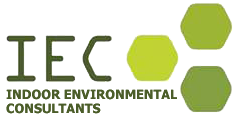

Indoor Air Quality (IAQ) Investigation Phase I
Scope:
The Phase I IAQ Investigation is designed to examine and identify problems within the indoor environment, draw conclusions based on the findings and provide a list of recommendations for an effective solution.
Service Includes:
1. Representative Monitoring (8 hours):
* Temperature
* Relative Humidity
* CO and CO2 concentration
* Total Volatile Organic Compounds (TVOC) (μg/m³)
* Formaldehyde
* Ozone
* Nitrogen and Sulfur Dioxide
* Ammonia
* Hydrogen Sulfide
2. Monitoring of suspended respirable particulate (PM10)
Notes:
a) All samples will be collected between three (3) and six (6) feet from the floor to represent the breathing zone of occupants.
c) All measurements and readings will be compare with the recommended parameters and guidelines established and as determined by cognizant authorities.
3. Air-O-Cell “Bioaerosols” air sample (indoor vs. outdoor comparison).
4. Examination of a representative sampling of the ductwork system, using a Micro-Inspector robotic system or a Pro-Scope
5. Visual inspection of the internal components of the Air handlings units (AHU’s) , including:
* Condition and physical integrity of components and surfaces
* Cooling Coil
* Drain pans
* Fan
* Internal insulation (condition)
6. Assessment of the filtration system:
* Efficiency
* Condition
* Replacement schedule
7. Assessment of the Fresh-Air Intake
* Amount
* Grill Location (Quality)
Note: This inspection of the AHU’s will be conducted according to the NADCA ACR 2013 Standard “Assessment, Cleaning and Restoration of HVAC Systems” and the guidelines published in the Inspection Manual of Air Conditioning Systems “Procedures for Assessing the Cleanliness of Commercial HHVAC Systems”
8. Visual inspection of the plenum area to determine the presence or absence of microbial contamination and/or any other contaminants
9. Visual inspection of structural components to determine the presence or absence of microbial contamination or water damage (ceiling tiles, gypsum board, etc.)
10. Water activity (%) sampling at hydroscopic buildings materials
11. External factors or conditions that could contribute to problems within the building’s environment
12. Comprehensive report that includes:
- Inspection Data -Observations
- Photographic evidence – Recommendations